#Performance Testing Strategy
Explore tagged Tumblr posts
Text
GQAT Tech’s QA Arsenal: Powerful Tools That Make Quality Assurance Smarter
In this technology-driven age, delivering high-quality software is not an optional function but a necessity. Clients now expect us to produce digital products— apps, websites, etc.-- that are made quickly and error-free. The best way to achieve this is with a quality assurance (QA) process and effective tools to adapt to their needs.
The GQAT Tech QA team calls their QA efficient and effective tools combined, and their QA arsenal productive platforms, automation, tools, and proven processes. These testing tools and approaches can help a QA team find bugs more quickly, decrease hands-on effort, and allow more test coverage depending on the software project.
Now, let's look at what a QA Arsenal is, why it is important, and how QA will help your business produce better software.
What is the QA Arsenal?
The "QA Arsenal" refers to the collection of tools, frameworks, and strategies at GQAT Tech that the QA team employs to provide quality testing to clients. The QA Arsenal is like a toolbox, where everything a tester needs to complete the project is in the toolbox.
It includes:
Automation testing tools
Manual testing techniques
Defect tracking systems
Performance testing platforms
Mobile and web testing tools
CI/CD integrations
Reporting and analytics dashboards
What Makes GQAT’s QA Arsenal Unique?
We do not use tools haphazardly. We use the most appropriate tools based on the client's type of project, technology stack, service timeline, and quality. The QA Arsenal is designed to offer flexibility and therefore considers:
Web apps
Mobile apps
Embedded systems
IoT devices
Enterprise software
Whether functional test, compatibility test, API test, performance test, GQAT Tech utilizes a custom mixture of tools to ensure that it is reliable, secure, and ready for launch.
Tools Included in the QA Arsenal
Here are some common tools and platforms GQAT Tech uses:
🔹 Automation Tools
Selenium – For web application automation
Appium – For mobile app automation
TestNG / JUnit – For running and managing test cases
Robot Framework – For keyword-driven testing
Postman – For API testing
JMeter – For performance and load testing
🔹 Defect & Test Management
JIRA – To log, track, and manage bugs
TestRail / Zephyr – For test case management
Git & Jenkins – For CI/CD and version control
BrowserStack / Sauce Labs – For cross-browser and device testing
How It Helps Clients
Using the QA Arsenal allows GQAT Tech to:
Detect Bugs Early – Catch issues before they reach end-users
Save Time – Automation reduces time spent on repetitive tasks
Test on Real Devices – Ensures compatibility across systems
Generate Reports – Easy-to-read results and test status
Integrate with DevOps – Faster release cycles and fewer rollbacks
Improve Product Quality – Fewer bugs mean a better user experience
Real Results for Real Projects
GQAT Tech’s QA Arsenal has been successfully used across different domains like:
FinTech
Healthcare
E-commerce
Travel & Transport
EdTech
AI and IoT Platforms
With their domain expertise and knowledge of tools, they help businesses go faster, mitigate risks, and build customer diligence.
Conclusion
Building a great QA team is essential, but having them equipped with the right tools makes all the difference. GQAT Tech’s QA Arsenal provides their testers with everything they need to test faster, smarter, and more comprehensively.
If you are building a digital product and want to ensure it is released in the real world, you need a testing partner who does not leave things to chance. You need a testing partner with a battle-tested QA arsenal.
💬 Ready to experience smarter quality assurance?
👉 Explore GQAT Tech’s QA Arsenal and get in touch with their expert team today!
#QA Arsenal#Software Testing Tools#Quality Assurance Strategies#Automation Testing#Manual Testing#Selenium#Appium#Test Management Tools#CI/CD Integration#Performance Testing#Defect Tracking#Cross-Browser Testing#GQAT Tech QA Services#Agile Testing Tools#End-to-End Testing
0 notes
Text
How to Calculate Test Automation ROI: A Practical Guide
Investing in test automation can significantly speed up releases and reduce bugs—but how do you measure its actual return on investment (ROI)?
Start by identifying baseline metrics: manual testing hours, defect leakage rates, and time to market. Then, evaluate the cost of automation, including tools, infrastructure, and engineering effort.
Use this basic formula:
ROI = (Savings from Automation – Investment in Automation) / Investment in Automation × 100
Savings from Automation can include:
Reduced manual testing effort (e.g., hours saved × hourly rate)
Faster release cycles (shorter time-to-market)
Lower post-release defects (cost of fixing production bugs)
Investment in Automation includes:
Cost of automation tools
Engineer time spent creating and maintaining scripts
Training and infrastructure setup
For example, if test automation strategy saved 300 hours annually (at $40/hr) = $12,000, and investment was $8,000, then ROI = 50%.
However, ROI isn't just about cost. Factor in intangible benefits like improved coverage, scalability, and team morale.
In conclusion, calculating ROI helps justify automation efforts, prioritize the right test cases, and align QA with business goals. A focused ROI strategy can turn automation into a long-term competitive advantage.
#qa testing services#performance testing tools#test management tool#test automation strategy#web based application testing#automated system testing#qa consulting services#qa software
0 notes
Text
Pat’s Marketing: Fuel Your Startup’s Growth with PPC Power!

Boost your startup with effective PPC Marketing Strategies for Startups from Pat’s Marketing. In today’s competitive business environment, particularly in Toronto, startups need to make every marketing dollar count. Pay-per-click (PPC) marketing offers a focused and efficient way to drive traffic and conversions. However, understanding the best practices of PPC can be challenging for new businesses. Our strategy includes:
🎯 Targeted PPC Campaigns: Focus your efforts on the right audience.
📈 Performance Max Campaigns: Optimize ads across Google platforms.
📱 Mobile-First Approach: Ensure your ads perform everywhere.
💡 A/B Testing: Fine-tune your campaigns for better results.
🏆 Local Geotargeting: Zero in on customers in your area for higher conversions.
Pat’s Marketing is your go-to digital marketing agency in Toronto for high-performing PPC campaigns tailored to startups.
#PPC marketing Toronto#startup digital marketing#PPC Marketing Strategies for Startups#smart bidding PPC#A/B testing ads#Performance Max campaigns#Toronto marketing experts#local PPC targeting#seo company toronto#seo company#toronto seo expert#best seo company toronto
0 notes
Text
Best Practices for Managing Paid Advertising Campaigns - Marketing Insider Group
Learn the best practices for managing paid advertising campaigns to boost engagement, conversions, and ROI.
#Paid advertising campaign management#Best practices for paid ads#Optimize paid media strategy#PPC campaign tips#Budgeting for digital ads#A/B testing ad campaigns#Google and Facebook Ads management#Improve ad conversion rates#Paid media performance tracking#Digital advertising ROI strategies
0 notes
Text
Optimizing Social Media Ad Campaigns with A/B Testing: A Technical Approach

Understanding A/B Testing in Social Media Advertising
A/B testing is a form of experiment where two versions of an ad (or more) are shown to separate audience segments to determine which performs better. When executed correctly, A/B testing allows for a data-backed approach to Ad Campaign Optimization. This method is particularly valuable for Social Media Ad Testing Strategies, where nuances in audience behavior can vary dramatically across platforms.
For instance, a campaign on Facebook might need to be designed differently from one on Instagram, even if both are part of the same overall strategy. Testing distinct aspects like ad copy, visuals, and calls-to-action (CTAs) can reveal what truly connects with audiences and drives conversions.
Why Social Media A/B Testing Matters
A/B testing is essential because it replaces assumptions with concrete data. Instead of relying on intuition or broad marketing theories, Data-Driven Ad Campaign Optimization lets marketers see exactly which strategies yield the highest return.
Moreover, since each social media platform caters to different demographics and user behaviors, A/B testing allows brands to tailor their ads to specific audiences. For instance, an ad on LinkedIn might benefit from a professional tone, while the same ad on Instagram could be more visually dynamic and personal.
Key Elements to Test in Social Media Ads
Effective Social Media A/B Testing goes beyond just testing one version of an ad against another. By isolating specific elements, marketers can better understand the underlying factors driving ad performance. Here are some essential elements to consider:
Ad Copy: The headline and body text play a pivotal role in capturing attention and conveying your message. Test variations in tone, length, and messaging to see what resonates best.
Visuals: Imagery is critical in Social Media Ad Campaigns. A/B testing images, colors, and even video formats can reveal which visuals best capture attention and encourage engagement.
Call-to-Action (CTA): Small tweaks in CTAs, such as “Learn More” vs. “Shop Now,” can influence conversions. Testing CTAs allows for insights into what drives users to take action.
Target Audience Segments: While the ad’s elements are crucial, testing different audience segments is equally important. Consider testing demographic filters like age, interests, and location for more precise targeting.
Ad Placements: Test where the ad appears on each platform. Some ads may perform better in Stories than in News Feeds, while others work better as carousel posts rather than single-image ads.
Step-by-Step Guide to Conducting A/B Testing on Social Media
For effective results, structured Social Media A/B Testing Best Practices should be followed. Here’s a step-by-step approach:
Step 1: Set Clear Objectives
Identify what you want to accomplish with the test. Are you looking to increase click-through rates (CTR), engagement, or conversions? Establishing a goal provides a framework for designing and evaluating your tests. This will also help you in Data-Driven Ad Campaign Optimization by allowing for more accurate comparisons.
Step 2: Choose One Variable per Test
It’s essential to isolate variables. Changing multiple elements in a single test can lead to inaccurate results. For example, if you want to test the ad copy, keep the visuals and CTAs consistent across the versions.
Step 3: Define Your Test Audience
Choose a sufficiently large and representative sample of your target audience. This sample size should be substantial enough to yield statistically significant results. Most Social Media Marketing Services in Pune recommend using platforms’ built-in testing tools, which automatically segment audiences for A/B tests.
Step 4: Run the Test Over a Set Period
Ensure that your test runs long enough to gather meaningful data. Generally, a test should run for at least one week, but it could be longer depending on your ad performance goals and audience size.
Step 5: Analyze Results Using Platform Analytics
Social media platforms like Facebook, Instagram, and LinkedIn provide detailed analytics for each campaign. Key metrics to consider include CTR, conversion rate, engagement rate, and cost-per-click (CPC). Use these insights to determine which version of the ad performed best.
Step 6: Apply Insights and Iterate
After concluding the test, implement the winning elements into your campaign and consider further Social Media Ad Testing Strategies to refine the ad. A/B testing is a continuous process. As your audience evolves, regular testing ensures your campaigns remain relevant and optimized.
Best Practices for Optimizing Social Media Ads with A/B Testing
To get the most out of your A/B tests, consider these Social Media A/B Testing Best Practices:
Start with Hypotheses: Formulate educated guesses before running tests. For example, if you believe a shorter CTA might boost engagement, start with that as your hypothesis.
Test at High-Traffic Times: Running tests when your audience is most active allows for quicker data collection and more accurate results.
Monitor Ad Fatigue: Running the same ad variations repeatedly can lead to audience fatigue, affecting engagement. Adjust your content regularly to keep it fresh.
Use A/B Testing Tools: Tools like Facebook’s A/B Testing feature simplify the testing process by segmenting audiences and providing real-time data on ad performance.
Leveraging Data for Continuous Improvement
Successful Social Media Marketing Services in Pune are increasingly adopting A/B testing as a standard approach to Optimize Social Media Ads. However, the true value lies in analyzing the data and using it to inform future strategies. By leveraging data from A/B tests, marketers can build a data-driven framework for their campaigns. Over time, this leads to more efficient use of ad budgets and increased engagement with target audiences.
Conclusion
The competitive nature of social media advertising demands a precise, data-driven approach to Optimize Social Media Ads. By embracing Social Media A/B Testing Best Practices and focusing on continuous improvement, businesses can maximize their ad performance and ROI. A/B testing is not a one-time task but a long-term strategy that ensures your brand’s message aligns with ever-evolving audience preferences. As a leading Social Media Marketing Service in Pune, Digital Rhetoric is dedicated to helping businesses leverage Data-Driven Ad Campaign Optimization for successful, impactful ad campaigns.
#Social media marketing services in pune#Social Media A/B Testing Best Practices#Optimize Social Media Ads#Data-Driven Ad Campaign Optimization#Social Media Ad Testing Strategies#Improve Ad Performance with A/B Testing
0 notes
Text
Mastering the Art of Creating the Perfect and Popular Image Hack
Introduction:In today’s digital age, visuals are everything. They capture attention, convey messages quickly, and are easily shared. But not all images are created equal. The ones that go viral or become widely popular are often the result of a carefully crafted process known as an image hack. In this guide, we’ll explore how to create the perfect and popular image hack that not only stands out…
#A/B testing#Adobe Photoshop#Audience analysis#Color theory#Copyright#design creativity#design inspiration#design software#emotional appeal#engagement strategies#ethical design#High-resolution images#image clarity#image composition#image editing#image metaphors#Image overlays#image usage rights#Memes#message clarity#performance metrics#platform-specific design#shareable content#social media analytics#social media challenges#Social media optimization#social media trends#special effects#stock photos#target demographic
0 notes
Text
Top 10 ChatGPT Prompts For Software Developers

ChatGPT can do a lot more than just code creation and this blog post is going to be all about that. We have curated a list of ChatGPT prompts that will help software developers with their everyday tasks. ChatGPT can respond to questions and can compose codes making it a very helpful tool for software engineers.
While this AI tool can help developers with the entire SDLC (Software Development Lifecycle), it is important to understand how to use the prompts effectively for different needs.
Prompt engineering gives users accurate results. Since ChatGPT accepts prompts, we receive more precise answers. But a lot depends on how these prompts are formulated.
To Get The Best Out Of ChatGPT, Your Prompts Should Be:
Clear and well-defined. The more detailed your prompts, the better suggestions you will receive from ChatGPT.
Specify the functionality and programming language. Not specifying what you exactly need might not give you the desired results.
Phrase your prompts in a natural language, as if asking someone for help. This will make ChatGPT understand your problem better and give more relevant outputs.
Avoid unnecessary information and ambiguity. Keep it not only to the point but also inclusive of all important details.
Top ChatGPT Prompts For Software Developers
Let’s quickly have a look at some of the best ChatGPT prompts to assist you with various stages of your Software development lifecycle.
1. For Practicing SQL Commands;

2. For Becoming A Programming Language Interpreter;

3. For Creating Regular Expressions Since They Help In Managing, Locating, And Matching Text.

4. For Generating Architectural Diagrams For Your Software Requirements.
Prompt Examples: I want you to act as a Graphviz DOT generator, an expert to create meaningful diagrams. The diagram should have at least n nodes (I specify n in my input by writing [n], 10 being the default value) and to be an accurate and complex representation of the given input. Each node is indexed by a number to reduce the size of the output, should not include any styling, and with layout=neato, overlap=false, node [shape=rectangle] as parameters. The code should be valid, bugless and returned on a single line, without any explanation. Provide a clear and organized diagram, the relationships between the nodes have to make sense for an expert of that input. My first diagram is: “The water cycle [8]”.

5. For Solving Git Problems And Getting Guidance On Overcoming Them.
Prompt Examples: “Explain how to resolve this Git merge conflict: [conflict details].” 6. For Code generation- ChatGPT can help generate a code based on descriptions given by you. It can write pieces of codes based on the requirements given in the input. Prompt Examples: -Write a program/function to {explain functionality} in {programming language} -Create a code snippet for checking if a file exists in Python. -Create a function that merges two lists into a dictionary in JavaScript.
7. For Code Review And Debugging: ChatGPT Can Review Your Code Snippet And Also Share Bugs.
Prompt Examples: -Here’s a C# code snippet. The function is supposed to return the maximum value from the given list, but it’s not returning the expected output. Can you identify the problem? [Enter your code here] -Can you help me debug this error message from my C# program: [error message] -Help me debug this Python script that processes a list of objects and suggests possible fixes. [Enter your code here]
8. For Knowing The Coding Best Practices And Principles: It Is Very Important To Be Updated With Industry’s Best Practices In Coding. This Helps To Maintain The Codebase When The Organization Grows.
Prompt Examples: -What are some common mistakes to avoid when writing code? -What are the best practices for security testing? -Show me best practices for writing {concept or function} in {programming language}.
9. For Code Optimization: ChatGPT Can Help Optimize The Code And Enhance Its Readability And Performance To Make It Look More Efficient.
Prompt Examples: -Optimize the following {programming language} code which {explain the functioning}: {code snippet} -Suggest improvements to optimize this C# function: [code snippet] -What are some strategies for reducing memory usage and optimizing data structures?
10. For Creating Boilerplate Code: ChatGPT Can Help In Boilerplate Code Generation.
Prompt Examples: -Create a basic Java Spring Boot application boilerplate code. -Create a basic Python class boilerplate code
11. For Bug Fixes: Using ChatGPT Helps Fixing The Bugs Thus Saving A Large Chunk Of Time In Software Development And Also Increasing Productivity.
Prompt Examples: -How do I fix the following {programming language} code which {explain the functioning}? {code snippet} -Can you generate a bug report? -Find bugs in the following JavaScript code: (enter code)
12. Code Refactoring- ChatGPt Can Refactor The Code And Reduce Errors To Enhance Code Efficiency, Thus Making It Easier To Modify In The Future.
Prompt Examples –What are some techniques for refactoring code to improve code reuse and promote the use of design patterns? -I have duplicate code in my project. How can I refactor it to eliminate redundancy?
13. For Choosing Deployment Strategies- ChatGPT Can Suggest Deployment Strategies Best Suited For A Particular Project And To Ensure That It Runs Smoothly.
Prompt Examples -What are the best deployment strategies for this software project? {explain the project} -What are the best practices for version control and release management?
14. For Creating Unit Tests- ChatGPT Can Write Test Cases For You
Prompt Examples: -How does test-driven development help improve code quality? -What are some best practices for implementing test-driven development in a project? These were some prompt examples for you that we sourced on the basis of different requirements a developer can have. So whether you have to generate a code or understand a concept, ChatGPT can really make a developer’s life by doing a lot of tasks. However, it certainly comes with its own set of challenges and cannot always be completely correct. So it is advisable to cross-check the responses. Hope this helps. Visit us- Intelliatech
#ChatGPT prompts#Developers#Terminal commands#JavaScript console#API integration#SQL commands#Programming language interpreter#Regular expressions#Code debugging#Architectural diagrams#Performance optimization#Git merge conflicts#Prompt engineering#Code generation#Code refactoring#Debugging#Coding best practices#Code optimization#Code commenting#Boilerplate code#Software developers#Programming challenges#Software documentation#Workflow automation#SDLC (Software Development Lifecycle)#Project planning#Software requirements#Design patterns#Deployment strategies#Security testing
0 notes
Text
https://www.brightbraintech.com/blog/guide-to-improving-ad-sucess-with-ab-testing/
#guide to improving ad success#A/B testing#advertising success#ad testing guide#A/B testing for ads#improve ad performance#advertising strategies#digital marketing insights#optimizing ad campaigns#successful ad optimization
0 notes
Text
Unlock the power of email marketing with five tips! Transform your emails into irresistible lead magnets that captivate your audience and drive engagement.
#Lead Generation Magnets#Emails#Email Marketing Strategy#Personalization of email#Perform a/b testing#Clear Call to Action.
1 note
·
View note
Text
5 Secrets to Transform Your Emails into Lead Generating Magnets
Unlock the power of email marketing with five tips! Boost email strategy with lead magnets, personalized emails, A/B testing, and clear calls to action. Elevate engagement and drive results!
#Lead Generation Magnets#Emails#Email Marketing Strategy#Personalization of email#Perform a/b testing#Clear Call to Action.
0 notes
Text
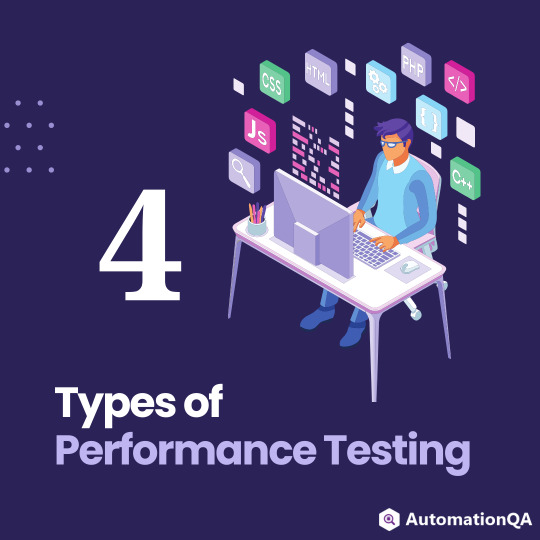
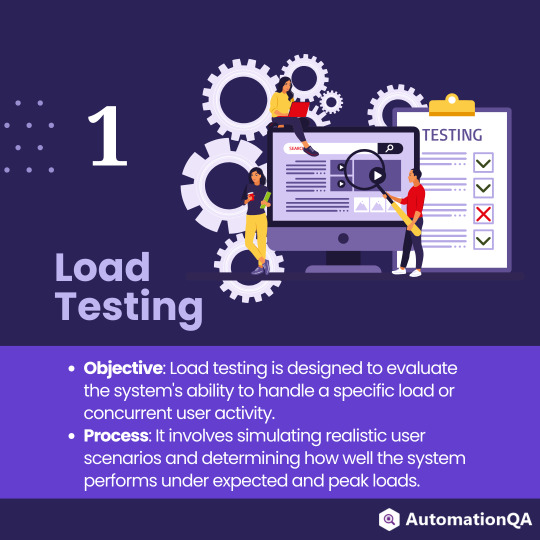
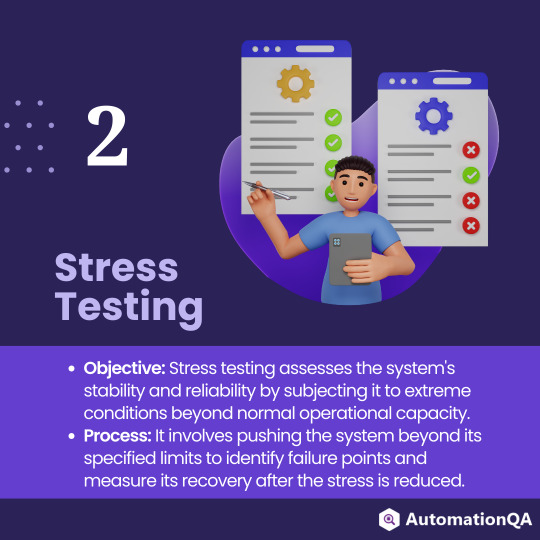
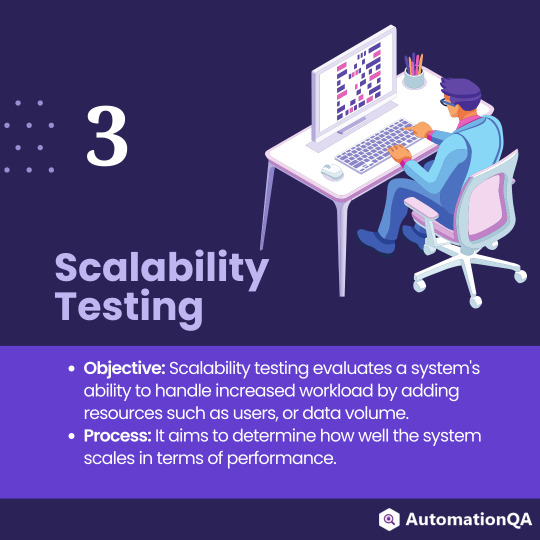
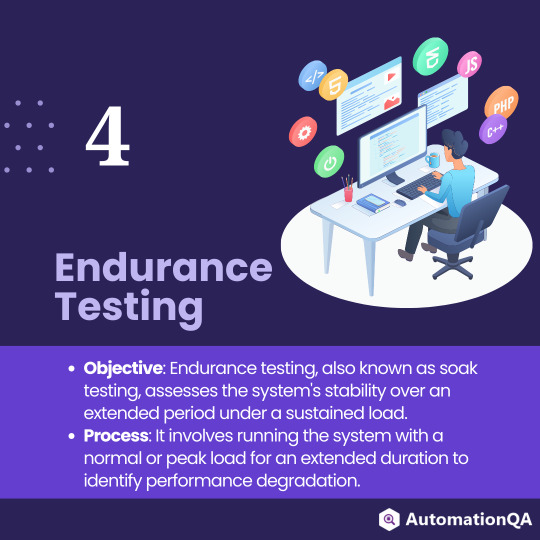
Elevate your software's performance game with these 4 essential testing types! 🚀✨
From Load to Stress, discover the key strategies to ensure your application thrives under any conditions.
#performance testing#testing#types#strategy#load testing#stress testing#scalability testing#endurance testing#application
0 notes
Text
Best Practices for Designing a Test Automation Framework
Designing a robust test automation framework is essential for scalable, maintainable, and efficient testing. A well-structured framework helps teams standardize test processes, accelerate execution, and improve code reusability. Here are key best practices to follow:
Define a Clear Architecture
Choose a layered structure that separates test scripts, utilities, and test data. This modularity improves maintainability and enables easy updates.
Select the Right Tools and Tech Stack
Choose tools that align with your application, team skillsets, and CI/CD goals—like Selenium, TestNG, Cypress, or Playwright. Integrate with version control and build tools for automation framework continuity.
Use Data-Driven and Keyword-Driven Approaches
Implement reusable test logic that supports parameterization. This reduces redundancy and allows flexibility in running tests with various datasets.
Enable Logging, Reporting, and Exception Handling
Build in detailed logs and custom reports for quick debugging. Include robust error handling to prevent script failures from breaking the entire suite.
Ensure Scalability and Maintainability
Design the framework to scale with your application. Follow coding standards, comment code clearly, and regularly refactor for performance.
A well-designed framework is the foundation for long-term test automation success.
#AI test automation#tcoe testing#test management tools#qa test management tools#automation tools for testing#performance testing tools#open source testing#web automation using robot framework#test automation strategy#testing coe framework
0 notes
Text
Six Test Taking Strategy
These are Proven and Practical Test Taking Strategies to help you ace your exams.
Welcome to our comprehensive guide on effective test-taking strategies for students of all levels. Whether you’re in middle school, nursing school, or preparing for standardized tests like the SAT, we’ve got you covered. Learn invaluable skills to boost your confidence and ace your exams!
View On WordPress
#active reading techniques#boost exam performance#effective test taking techniques#how to ace exams#sat test taking strategies#standardized test preparation.#study tips#test taking skills#test taking strategies for elementary school#test taking strategies for middle school#test taking strategies for nursing students#test taking strategies for students#time management for exams#what are 10 test taking strategies
1 note
·
View note
Text
The Importance of A/B Testing in Paid Advertising Campaigns
Discover how A/B testing boosts ad performance with data-driven insights. Learn eco-friendly marketing tips and sustainable brand strategies to optimize campaigns.
#A/B testing ads#Paid advertising strategy#Optimize ad performance#Split testing campaigns#Improve ad results#digital marketing#content marketing strategy#content writing#seo blog writing services#digital marketing courses#digital marketing strategy#content promotion services#digital marketing course#paid media advertising
0 notes
Text
Automation Testing Insights: Transforming Testing
The global automation testing market size is expected to reach USD 92.45 billion by 2030. Prominent technological advancement in artificial intelligence (AI) and machine learning (ML) is propelling the demand for the market. Mobile application usage is growing across various end-user industries, and smartphone penetration is rising, opening an attractive potential for market expansion. Furthermore, there is a rising demand for automation testing as web-based applications have developed significantly and new software technologies have emerged. The market is growing rapidly due to the increasing usage of ML and AI for advanced analytics and continuous testing across DevOps and DevSecOps areas.
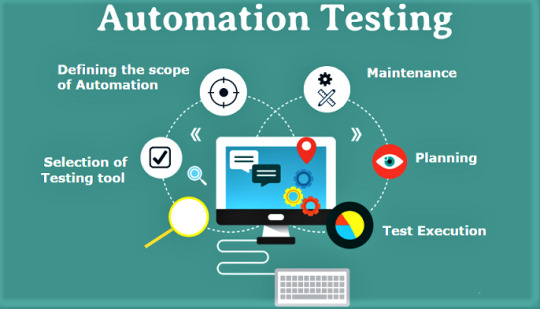
Automation Testing Market Report Highlights
The services segment dominated the market and accounted for over 56% of the global revenue owing to rapid advancements in implementation services, which make it easier to include automation into a functioning infrastructure for software testing
With the aid of this service, automation is integrated into an existing software automation testing setup
The large enterprises segment held the largest revenue share in 2022 as it helps improve efficiency, reduce manual effort, increase test coverage, and ensure the quality of software applications
The BFSI segment is estimated to have significant growth over the forecast period; adopting digitalization in the BFSI sector creates a significant demand for application software automation testing
Gain deeper insights on the market and receive your free copy with TOC now @: Automation Testing Market Report
The emerging use of RPA to automate time-consuming, error-prone manual processes are just a few instances of the usage of AI & ML in automation testing. Moreover, a bot uses the page’s numerous links and web forms to systematically explore through an online application when web crawling or spidering. This is a new use for AI and ML in automation testing. This approach is typically used for indexing online browsing. It may be improved further to perform reverse engineering on an application being tested and automatically find Test Cases. Emerging automation testing tools are significantly fueling market growth.
For instance, Testcraft, a codeless Selenium test automation platform for regression and continuous testing, as well as monitoring of web applications, is gaining traction among users. Their revolutionary AI tech removes maintenance time and cost, as it certainly affects changes in the app. Similarly, Applitools Eyes, Testim, and Test.ai are more automation testing tools propelling the market growth. Furthermore, mergers and acquisitions by other key players are propelling market growth. For instance, in 2022, to improve the user experience on 5G smartphones, Key sight introduced AI-driven and automated testing. Automation and AI enable mobile service providers and app developers to more swiftly evaluate how smartphone users engage with native apps in the real world.
#Automation Testing#Quality Assurance#Software Testing#Test Automation#Continuous Testing#Test Automation Framework#DevOps Testing#Selenium#Test Automation Tools#Performance Testing#Regression Testing#Agile Testing#UIAutomation#Test Scripting#Test Automation Engineer#Codeless Automation#Automation Strategy#CI/CDTesting#Test Automation Best Practices
0 notes
Text
https://thepoolvision.com/mvp/

Mastering Project Management with MVP: Building Successful Software
In the fast-paced world of software development, where innovation drives success, the concept of the Minimum Viable Product (MVP) has emerged as a game-changer. MVP project management has revolutionized how startups and entrepreneurs approach software development, allowing them to validate ideas, minimize risks, and maximize outcomes.
We'll delve into the depths of MVP software development, exploring its lifecycle, methodologies, benefits, and real-world success stories.
#MVP Software Development#Proof of Concept Services#Minimum Viable Product Launch#MVP Development Lifecycle#Lean Development Methodology#MVP Iteration and Refinement#Cost-Effective MVP Solutions#MVP for Startups#MVP for Entrepreneurs#MVP User Experience Design#MVP Validation Process#MVP Development Framework#MVP Performance Testing#MVP Deployment Strategy
1 note
·
View note